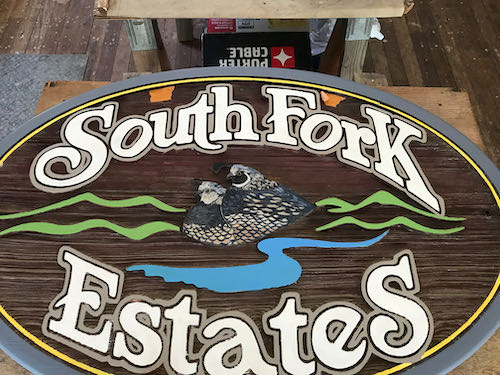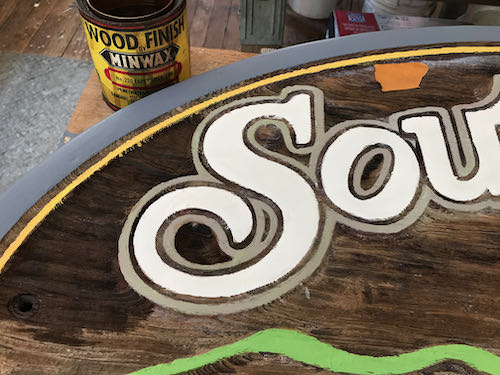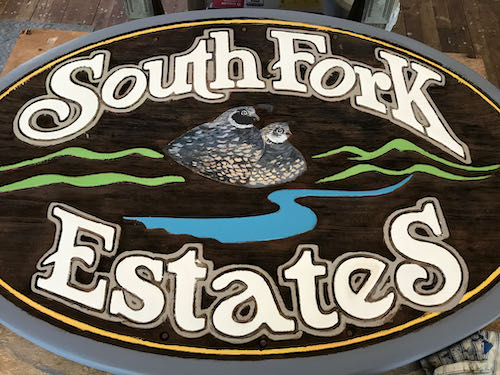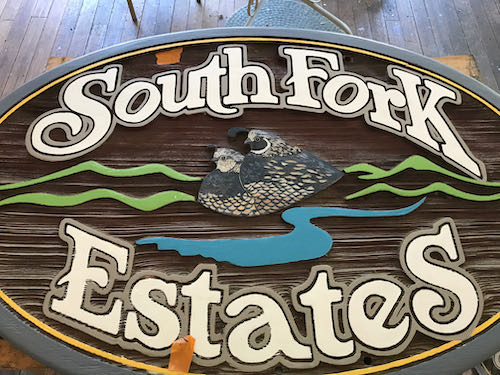If you subscribe to the blog and read the email on your phone, the photos might not show up. (Some people get them, some do not; it isn’t a problem I know how to solve.) You can see them by going to the blog on the internet. It is called cabinart.net/blog, and the latest post is always on top.
 The South Fork Estates sign project was a biggie, one with some unresolved questions, but I did my part and then passed it back to the customer. Being a fine artist (an artist who makes art to put on the walls) doesn’t qualify me to understand the chemistry of paints, sealers, varnishes, stains, or how to treat wood. It is easier to just state that fact up front.
The South Fork Estates sign project was a biggie, one with some unresolved questions, but I did my part and then passed it back to the customer. Being a fine artist (an artist who makes art to put on the walls) doesn’t qualify me to understand the chemistry of paints, sealers, varnishes, stains, or how to treat wood. It is easier to just state that fact up front.
However, the customer for those signs decided they needed to have the background wood painted. Initially, in 1990, the entire signs were painted a burgundy, then overpainted with the colors. This was evident after the 32-year-old signs were sanded and scraped. The customer only asked me to refresh the colors, or I would have first (reluctantly) coated them with a burgundy or dark brown. I say “reluctantly”, because I thought it was bare wood, and it pains me to cover bare wood with paint.
Alas, the customer was concerned that my 2-3 coats of paint were insufficient, and requested that I paint the background, so he brought them back to me, for quite a bit of discussion. I told him that he was the boss.
This is a tricky situation: is it me guaranteeing my work, or is it a “change order”, as contractors refer to extra requests? I decided that the extra layer of color was on me, and the meter would be running for the background.
After adding another layer to the colors, I sent him this email:


